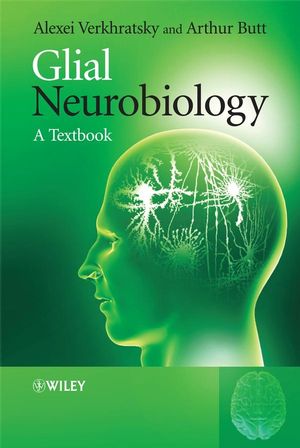Glial Neurobiology: A TextbookISBN: 978-0-470-01564-3
Hardcover
230 pages
September 2007
 This is a Print-on-Demand title. It will be printed specifically to fill your order. Please allow an additional 15-20 days delivery time. The book is not returnable.
Other Available Formats: Paperback
|
||||||
List of abbreviations.
PART I Physiology of Glia.
1 Introduction to Glia.
1.1 Founders of glial research: from Gabriel Valentin to Karl-Ludwig Schleich.
1.2 Beginning of the modern era.
1.3 Changing concepts: Glia express molecules of excitation.
1.4 Glia and neurones in dialogue.
2 General Overview of Signalling in the Nervous System.
2.1 Intercellular signalling: Wiring and volume modes of transmission.
2.2 Intracellular signalling.
3 Morphology of Glial Cells.
3.1 Astrocytes.
3.2 Oligodendrocytes.
3.3 NG2 expressing glia.
3.4 Schwann cells.
3.5 Microglia.
4 Glial Development.
4.1 Phylogeny of glia and evolutionary specificity of glial cells in human brain.
4.2 Macroglial cells.
4.3 Astroglial cells are brain stem cells.
4.4 Schwann cell lineage.
4.5 Microglial cell lineage.
5 General Physiology of Glial Cells.
5.1 Membrane potential and ion distribution.
5.2 Ion channels.
5.3 Receptors to neurotransmitters and neuromodulators.
5.4 Glial syncytium – gap junctions.
5.5 Glial calcium signalling.
5.6 Neurotransmitter release from astroglial cells.
5.7 Glial neurotransmitter transporters.
5.8 Glial cells produce and release neuropeptides.
5.9 Glial cell derived growth factors.
6 Neuronal–Glial Interactions.
6.1 Close apposition of neurones and astroglia: the tripartite synapse.
6.2 Neuronal–glial synapses.
6.3 Signalling from neurones to astrocytes.
6.4 Signalling from astrocytes to neurones.
6.5 Signalling between oligodendrocytes and neurones.
6.6 Signalling between Schwann cells and peripheral nerves and nerve endings.
PART II Glial Cells and Nervous System Function.
7 Astrocytes.
7.1 Developmental function – producing new neural cells.
7.2 Developmental function – neuronal guidance.
7.3 Regulation of synaptogenesis and control of synaptic maintenance and elimination.
7.4 Structural function – creation of the functional microarchitecture of the brain.
7.5 Vascular function – creation of glial–vascular interface (blood–brain barrier) and glia–neurone–vascular units.
7.6 Regulation of brain microcirculation.
7.7 Ion homeostasis in the extracellular space.
7.8 Regulation of extracellular glutamate concentration.
7.9 Water homeostasis and regulation of the extracellular space volume.
7.10 Neuronal metabolic support.
7.11 Astroglia regulate synaptic transmission.
7.12 Integration in neuronal–glial networks.
7.13 Astrocytes as cellular substrate of memory and consciousness?
8 Oligodendrocytes, Schwann Cells and Myelination.
8.1 The myelin sheath.
8.2 Myelination.
8.3 Myelin and propagation of the action potential.
PART III Glia and Nervous System Pathology.
9 General Pathophysiology of Glia.
9.1 Reactive astrogliosis.
9.2 Wallerian degeneration.
9.3 Activation of microglia.
10 Glia and Diseases of the Nervous System.
10.1 Alexander’s disease.
10.2 Spreading depression.
10.3 Stroke and ischaemia.
10.4 Cytotoxic brain oedema.
10.5 Neurodegenerative diseases.
10.6 Neuropathic pain.
10.7 Demyelinating diseases.
10.8 Infectious diseases.
10.9 Peripheral neuropathies.
10.10 Psychiatric diseases.
10.11 Gliomas.
Conclusions.
Recommended literature.
Author Index.
Subject Index.



